Dynamics of gene expression during development and expansion of vegetative stem internodes of bioenergy sorghum
- PMID: 28649278
- PMCID: PMC5480195
- DOI: 10.1186/s13068-017-0848-3
Dynamics of gene expression during development and expansion of vegetative stem internodes of bioenergy sorghum
Abstract
Background: Bioenergy sorghum accumulates 75% of shoot biomass in stem internodes. Grass stem internodes are formed during vegetative growth and elongate in response to developmental and environmental signals. To identify genes and molecular mechanisms that modulate the extent of internode growth, we conducted microscopic and transcriptomic analyses of four successive sub-apical vegetative internodes representing different stages of internode development of the bioenergy sorghum genotype R.07020.
Results: Stem internodes of sorghum genotype R.07020 are formed during the vegetative phase and their length is enhanced by environmental signals such as shade and floral induction in short days. During vegetative growth, the first visible and youngest sub-apical internode was ~0.7 cm in length, whereas the fourth fully expanded internode was ~5 cm in length. Microscopic analyses revealed that all internode tissue types including pith parenchyma and vascular bundles are present in the four successive internodes. Growth in the first two sub-apical internodes occurred primarily through an increase in cell number consistent with expression of genes involved in the cell cycle and DNA replication. Growth of the 3rd internode was associated with an increase in cell length and growth cessation in the 4th internode was associated with up-regulation of genes involved in secondary cell wall deposition. The expression of genes involved in hormone metabolism and signaling indicates that GA, BR, and CK activity decreased while ethylene, ABA, and JA increased in the 3rd/4th internodes. While the level of auxin appears to be increasing as indicated by the up-regulation of ARFs, down-regulation of TIR during development indicates that auxin signaling is also modified. The expression patterns of transcription factors are closely associated with their role during the development of the vegetative internodes.
Conclusions: Microscopic and transcriptome analyses of four successive sub-apical internodes characterized the developmental progression of vegetative stem internodes from initiation through full elongation in the sorghum genotype R.07020. Transcriptome profiling indicates that dynamic variation in the levels and action of GA, CK, IAA, BR, ethylene, ABA, and JA modulate gene expression and growth during internode growth and development. This study provides detailed microscopic and transcriptomic data useful for identifying genes and molecular pathways regulating internode elongation in response to various developmental and environmental signals.
Keywords: Bioenergy; Cell cycle; Hormone; Internode; Sorghum; Transcriptome.
Figures
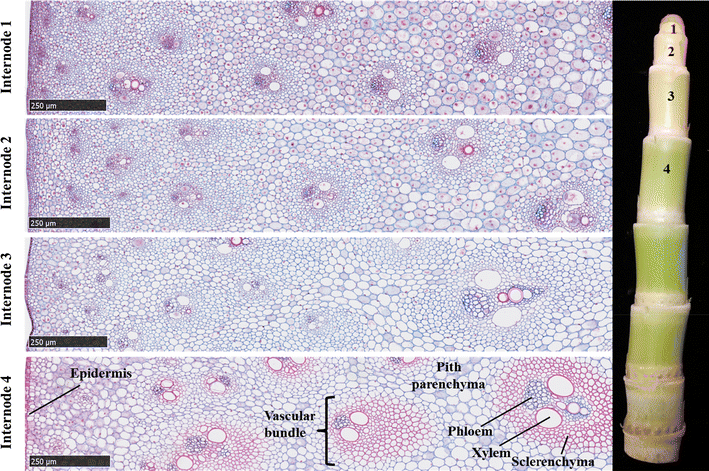

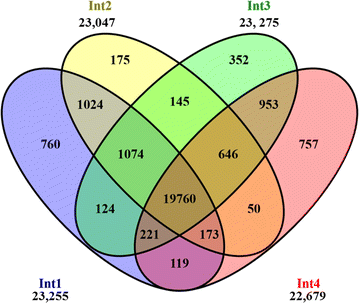


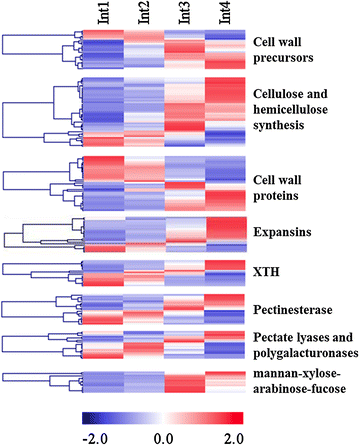

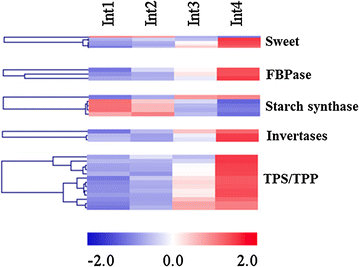

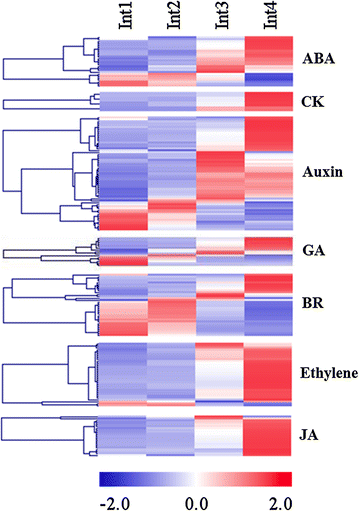
References
-
- Rooney WL, Blumenthal J, Bean B, Mullet JE. Designing sorghum as a dedicated bioenergy feedstock. Biofuel Bioprod Bior. 2007;1(2):147–157. doi: 10.1002/bbb.15. - DOI
LinkOut - more resources
Full Text Sources
Other Literature Sources
Molecular Biology Databases
Research Materials

